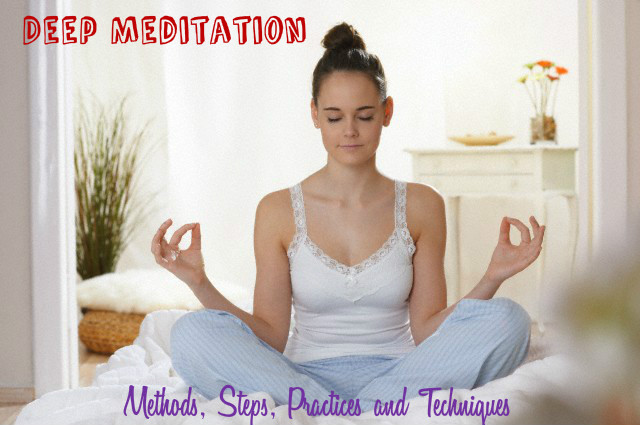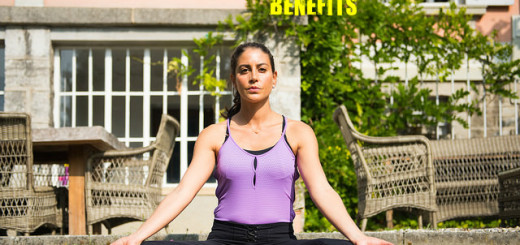Deep Meditation Methods Steps Practices and Techniques
Do you know that the aboriginals practiced the art of meditation as far back as 50, 000 years? They used vibration sound and this helped them to reach higher dimensions of reality. Such dimensions are totally new to the normal people. Such dimensions could be achieved only by deep meditation techniques.
Deep Meditation Benefits:
By practicing deep meditation, you can focus well on all that you do and overcome all mental distractions. This gradually helps you to attain a state of nirvana. It is also good for making you reach higher levels of concentration and relaxation, and get relief from stress. According to the advice of experts, you have to meditate at least 10 to 20 minutes per day for making your body and mind relaxed. Here we will have a look at how to meditate deeply.
Tips for a Deeper Meditation Practice:
- To practice meditation, you have to find a calm and quiet spot in your home, where no sounds can disturb you from your meditation. It should be away from cell phones, television, computer, family, friends and other things that may distract you. Choose a space that is quiet and pleasant, where you will feel happy to spend your time. It should also be comfortable and not used any purpose other than meditation. By meditating on the same place daily, you will develop good habits. The best time for meditation is before sunrise, at 5 am, or in the evening at 5 pm.
- Regarding Steps it is important that you sit in a comfortable position and maintain a correct posture when you enter into deep meditation. You can sit with your legs crossed, in a position that is comfortable to you. Remember to keep your back straight. You can put your hands on your thighs or knees. This position helps you to keep your mind away from any sort of distractions.
- You can achieve deep meditation by performing simple breathing exercises. Make sure that you perform breathing exercises in a calm and quiet environment, which is absolutely free from anything that may distract you. First of all, observe your breathing pattern for one minute. Feel the rise and fall of your chest as you breathe in and out, and how your abdomen moves when you breathe. You can also feel the way air passes through your nostrils as you breathe. After taking three deep breaths, you will find that your breath has become less frequent.
- As you practice deep meditation, it is natural that you may feel restless and not very comfortable at times. You may experience anxiety, irritation, excitement etc. You may also feel an urge to move, talk, shift and even to put an end to your meditation. Sometimes this urge becomes uncontrollable. The best way to tackle this issue is to stop meditating for a few minutes and calm your mind and body. After you feel yourself calm, you can resume meditation.
- Guided imagery is an excellent technique to reduce stress. Here we use visualization and mental imagery techniques and imagine that we are transported to a quiet and peaceful place. By imagining this, we really feel that we are in such a place. Guided imagery is very beneficial for reducing high blood pressure and lowering the levels of cholesterol and glucose in the body.
- Then there is Mindfulness, which is a practice that helps in getting your mind free from mental chatter or inner noise. This way it prepares your mind for deep meditation. This is a powerful and effective practice that helps in deep meditation. it also improves the quality of your life. When you practice mindfulness technique, keep your gaze downwards and focus on the tip of your nose. Try to concentrate on the sensation of air, as it moves in and out of your body when you breathe. Mindfulness meditation is very beneficial for improving your mood and makes you feel cheerful and relaxed. It is also good for giving a boost to the functioning of immune system.
- The mantra for deepening your meditation is to improve your focus, and shut out all outside distractions. Once you are fully focused, you will never be distracted by external disturbances. If you want a physical object to concentrate on, then flame meditation is ideal for you. You can also use other objects like a ball, apple, flower etc to focus. For this you can choose a dimly lit place, where you can fully focus on the flame and start meditating. Flame meditation is great for enhancing your concentration.
- Body scan meditation is a practice in which you focus on different parts of your body. To perform this, sit in a position that is comfortable to you relax your body and mind by taking deep breaths. Now close your eyes and start your meditation by concentrating on your body as if you are doing a body scan. Begin scanning of your body and draw your attention to a particular part of your body. Observe this body part carefully, deep inside as well as on the outside. Once you finish observing this body part, you can do the same with other body parts. Once you finish scanning your body parts, you can take a few deep breaths and finish your exercise. If you go for a quick body scan, focus on larger sections of the body and if you prefer in-depth body scan, you can focus on smaller sections of the body.
- Sound and word mantra meditation help in soothing your mind, body and soul. It improves your concentration power. You will feel free as a bird, reaching beyond the bonds of time and space.




